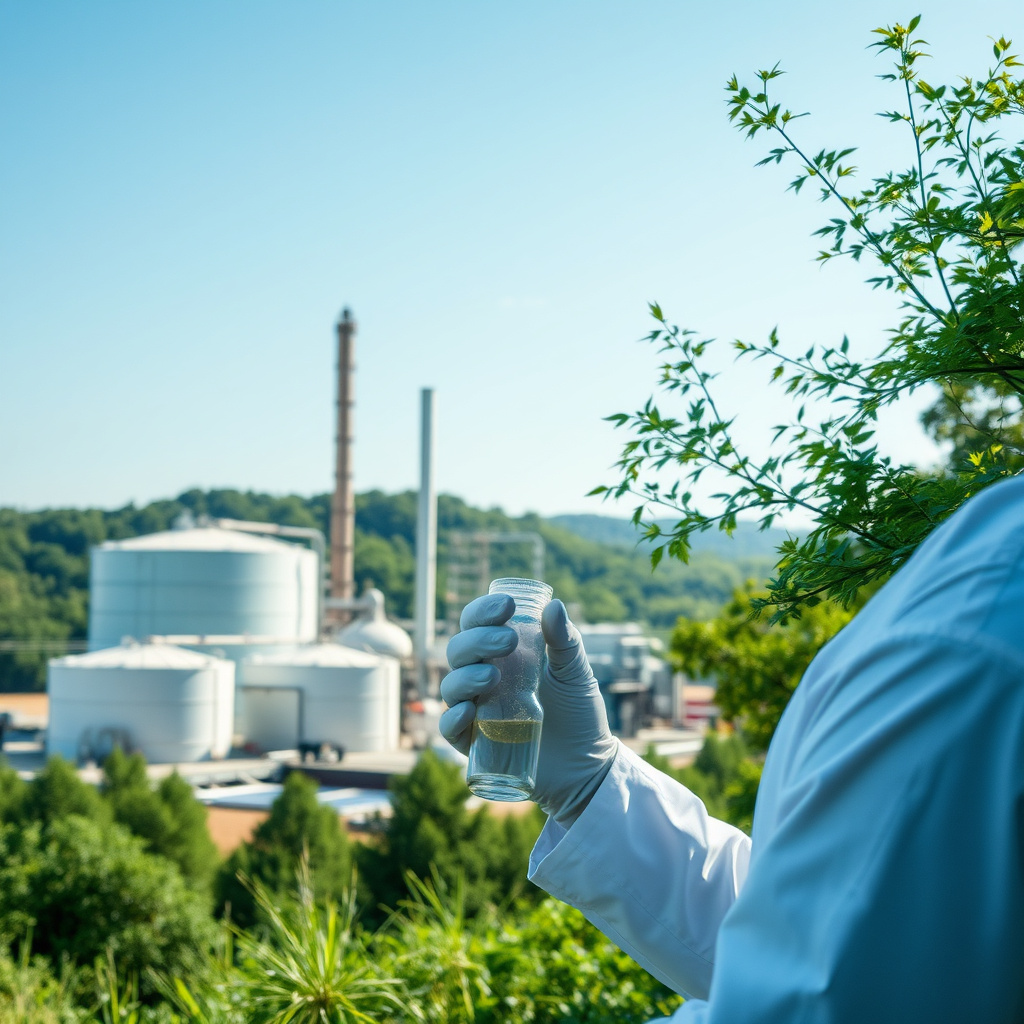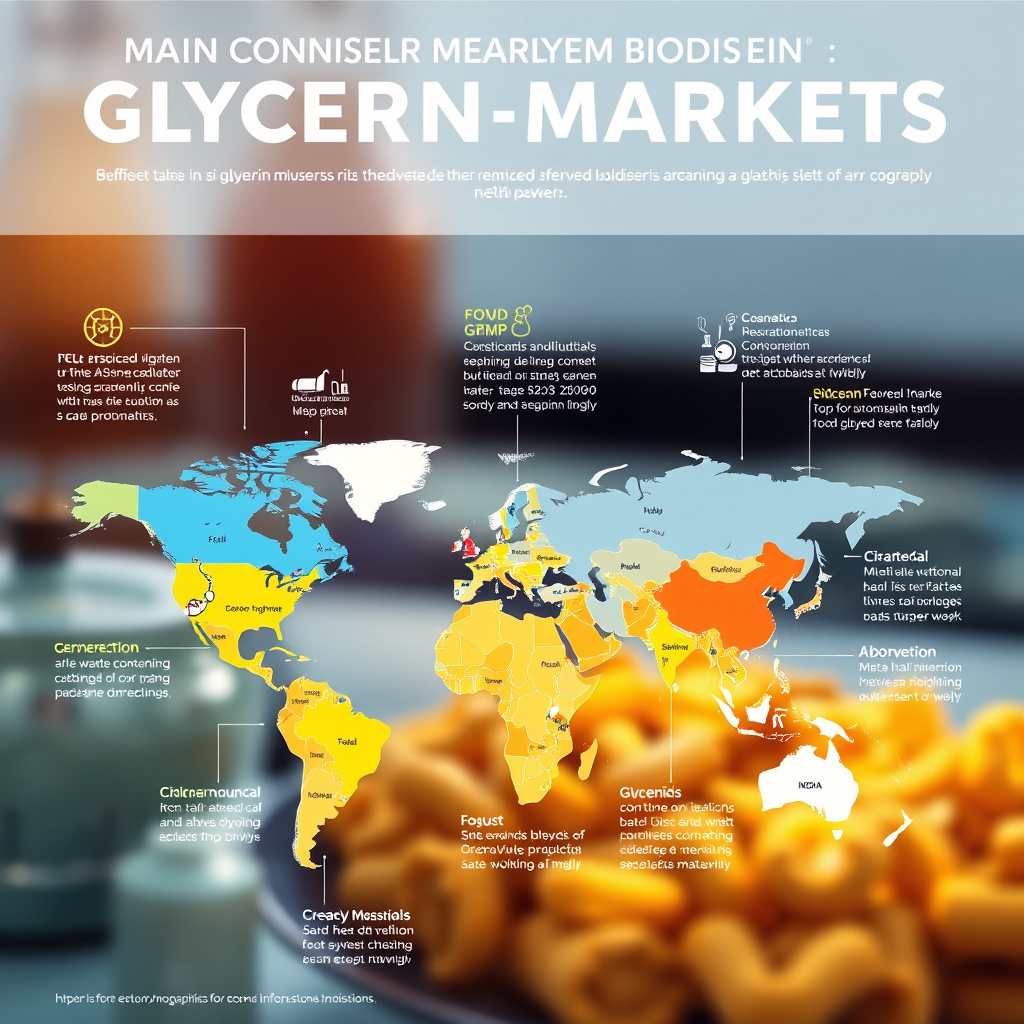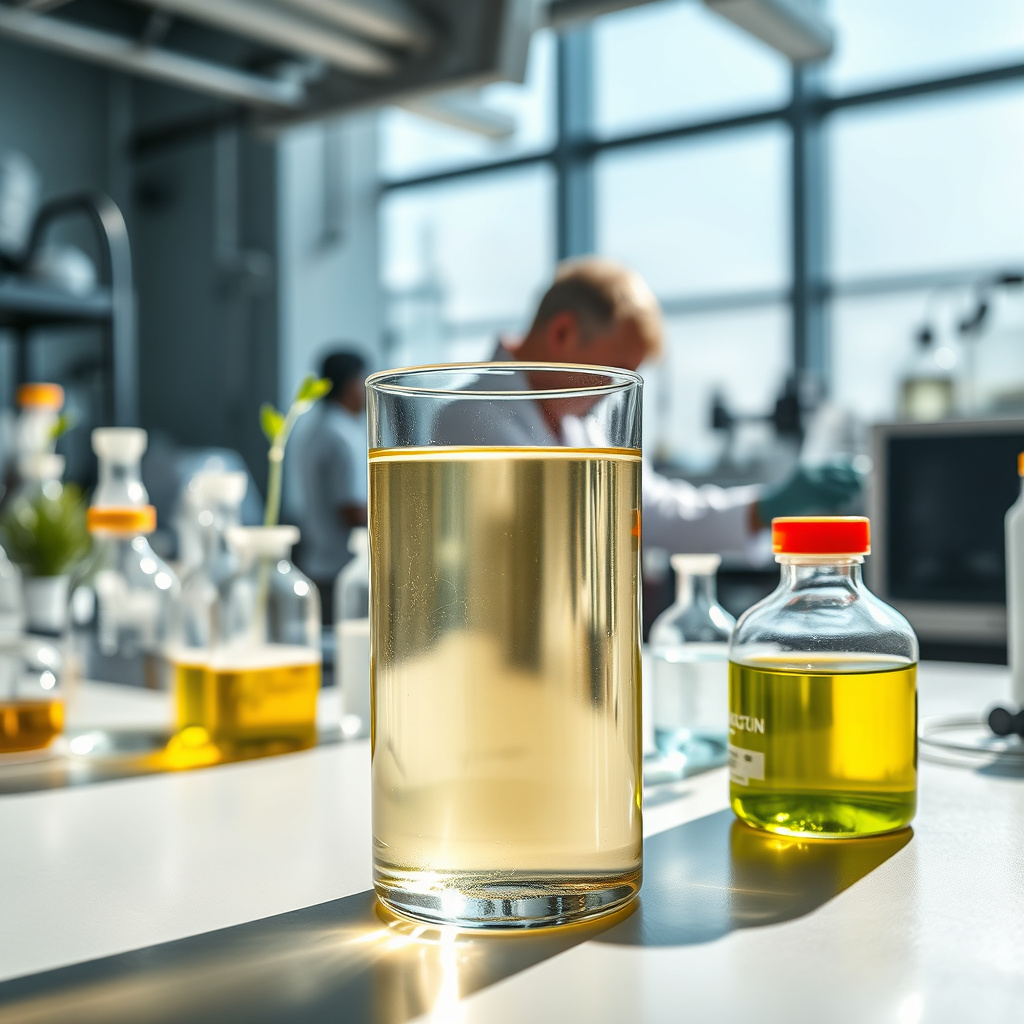Quais são os desafios ambientais da utilização de glicerina em biodiesel? This refers to the environmental impacts and complications arising from using glycerin as a byproduct in biodiesel production.
Quais são os desafios ambientais da utilização de glicerina em biodiesel? This is a critical question for companies looking to source glycerin sustainably.
In this post, we will delve into the complexities and environmental implications of using glycerin in biodiesel production.
You will discover the significant challenges that arise and the sustainable practices that can help mitigate them, making this an essential read for businesses committed to eco-friendly solutions.
Understanding Glycerin’s Role in Sustainable Fuel Production
As we explore the landscape of sustainable fuel production, one substance has emerged as a critical player: glycerin. Often viewed merely as a byproduct of the biodiesel manufacturing process, its role extends far beyond that. In the quest for eco-friendly energy solutions, understanding how glycerin fits into the equation is vital for both producers and consumers alike.
The Production of Biodiesel and Glycerin
In the biodiesel production process, oils or fats are transformed into biodiesel through a reaction called transesterification. This process not only yields biodiesel, which is a renewable fuel, but also generates significant amounts of glycerin. This byproduct can be seen as a double-edged sword; while it represents a valuable resource, it also poses challenges related to its disposal and utilization. The growing demand for renewable energy sources has led to an increase in biodiesel production, and consequently, an abundance of glycerin in the market.
Utilizing Glycerin in Sustainable Practices
The sustainable use of glycerin is becoming increasingly important. In the present day, industries are exploring innovative applications for this compound. For instance, rather than allowing glycerin to go to waste, companies are looking to repurpose it in various sectors, including food, pharmaceuticals, and cosmetics. This not only enhances the economic viability of biodiesel but also contributes to a circular economy, where waste is minimized and resources are fully utilized.
- Food industry: Glycerin is often used as a sweetener or humectant, helping to retain moisture in food products.
- Pharmaceuticals: It serves as an essential ingredient in many medications and personal care products.
- Cosmetics: The moisturizing properties of glycerin make it a popular choice in skin care formulations.
Environmental Challenges and Opportunities
Despite its potential, the large-scale production of glycerin does present some environmental challenges. One significant issue is the need for effective management of the excess glycerin generated during biodiesel production. If not handled properly, it can lead to pollution and waste management concerns. To address these challenges, researchers and companies are focusing on improving the efficiency of biodiesel production and enhancing the economic feasibility of glycerin utilization. By fostering partnerships with reliable glycerin suppliers, producers can work towards innovative solutions that benefit both the environment and their bottom line.
In the current landscape, sourcing glycerin from reputable manufacturers is essential. Whether one is looking to buy glycerin online in bulk or seeking specific grades for food or pharmaceutical use, finding a trustworthy glycerin supplier is crucial for ensuring quality and sustainability. Understanding the price dynamics, such as glycerin price per ton, can also aid businesses in making informed decisions about their supply chains.
In conclusion, as we delve deeper into the world of renewable energy, the role of glycerin in biodiesel production is becoming increasingly apparent. By embracing its potential and addressing the associated challenges, we can pave the way for a more sustainable future.
Environmental Impacts of Glycerin Utilization in Biofuels
As the world increasingly turns to sustainable energy sources, the role of glycerin in the production of biodiesel has become a focal point of discussion. Glycerin, a byproduct of biodiesel production, presents unique environmental challenges that must be addressed to ensure the sustainability of biofuels.
Understanding the Byproducts
When biodiesel is produced, a significant amount of glycerin is generated. This byproduct can accumulate quickly, leading to potential environmental issues if not managed properly. The disposal of excess glycerin poses a risk to soil and water systems if released untreated. Its high biochemical oxygen demand (BOD) can cause oxygen depletion in aquatic environments, harming aquatic life.
Land Use and Resource Competition
The cultivation of feedstocks for biodiesel production can compete with land needed for food production. This competition can lead to deforestation and habitat destruction, impacting biodiversity. Additionally, the demand for crops used in glycerin production may drive up prices, further stressing food security in vulnerable regions.
- Increased agricultural input costs
- Potential for monoculture practices
- Soil degradation and erosion risks
Water Use and Pollution
Producing feedstocks for biodiesel also requires significant water resources. The agricultural practices involved can lead to water pollution through the runoff of fertilizers and pesticides. This not only affects local ecosystems but can also contaminate drinking water supplies.
Mitigating Environmental Challenges
To address these challenges, innovative practices are emerging. Some glycerin suppliers are exploring ways to convert excess glycerin into value-added products, reducing waste and improving economic viability. Utilizing biodiesel production waste for energy generation is another promising avenue.
By prioritizing sustainable sourcing and management practices, the industry can reduce the environmental footprint of glycerin and biodiesel production. This involves fostering partnerships with responsible glycerin manufacturers and ensuring that the production process adheres to environmental regulations.
As we navigate the complexities of biofuel production, recognizing the environmental impacts of glycerin utilization is essential. By addressing these issues proactively, we can work towards a more sustainable future in energy production.
Navigating Regulations: Environmental Standards for Glycerin in Biodiesel
In the evolving landscape of renewable energy, understanding the regulations surrounding the use of Glicerina in Biodiesel is essential for manufacturers and stakeholders. As the world shifts toward sustainable fuel sources, the role of environmental standards cannot be overstated. These regulations not only safeguard the environment but also ensure that fuel production processes remain efficient and responsible.
The Importance of Compliance
Adhering to environmental regulations is crucial for any glycerin manufacturer or bulk glycerin supplier aiming to enter or expand in the biodiesel market. Compliance with these standards helps mitigate environmental risks and enhances the overall sustainability of the production process. Regulatory bodies often set guidelines that dictate how glycerin byproducts should be handled, ensuring that they do not contribute to pollution or waste.
Key Environmental Standards
Environmental standards for glycerin in biodiesel production focus on several critical areas:
- Emissions Control: Regulations often require that emissions from biodiesel production facilities stay within set limits. This includes monitoring the release of volatile organic compounds (VOCs) and other pollutants.
- Waste Management: Guidelines on waste disposal are stringent. Biodiesel producers must have proper systems in place to manage glycerin byproducts, minimizing their impact on the environment.
- Water Usage: The amount of water utilized in glycerin extraction and biodiesel production is closely monitored to prevent over-extraction and contamination of local water sources.
Challenges in Meeting Standards
Many producers encounter challenges when trying to meet these environmental standards. For instance, sourcing high-quality glycerin that complies with food or pharmaceutical-grade requirements can be demanding. A reliable glycerin export supplier can help ensure that the glycerin used in biodiesel production meets the necessary purity levels, thus adhering to regulatory demands.
Furthermore, fluctuations in the glycerin price per ton can affect the cost-effectiveness of meeting these standards. Producers may find it challenging to balance compliance with economic viability, particularly in a market where prices can vary significantly.
Future Trends in Glycerin Regulation
As the focus on sustainability increases, regulations surrounding Glicerina in Biodiesel are expected to become even more stringent. Authorities are likely to implement more comprehensive assessments of environmental impact, which could include lifecycle analyses of glycerin production and usage. Staying ahead of these trends will be vital for vegetable glycerin suppliers and those looking to buy glycerin online for biodiesel applications.
In the present scenario, engaging with environmental experts and regulatory bodies can provide valuable insights into navigating these complexities. By being proactive, producers can ensure that their operations not only comply with existing regulations but also contribute to a more sustainable future in the biodiesel sector.
Innovative Solutions to Mitigate Environmental Challenges
In the pursuit of sustainable practices, innovative solutions are emerging to address the environmental challenges posed by various sectors, including the biofuel industry. One notable focus is on the use of glycerin in the production of biodiesel. As countries move towards greener energy sources, it’s crucial to explore how to effectively manage the environmental impact of glycerin utilization, especially considering its byproduct nature in biodiesel production.
Embracing Circular Economy Principles
A promising approach is the adoption of circular economy principles. By viewing waste materials like glycerin not as liabilities but as resources, manufacturers can create value while minimizing environmental harm. For example, glycerin can be repurposed as a feedstock in various industries, including cosmetics and food, thereby reducing the overall waste generated. This not only helps to reduce the glycerin surplus but also provides an avenue for glycerin suppliers to diversify their offerings.
Advanced Treatment Technologies
Additionally, employing advanced treatment technologies can significantly mitigate the environmental footprint of glycerin. Techniques such as bioremediation and innovative filtration systems can help in treating wastewater that contains glycerin, ensuring that harmful substances are neutralized before they enter ecosystems. This approach not only protects water quality but also enhances the overall sustainability of biodiesel production.
Collaboration Across Sectors
Collaboration among stakeholders is equally essential in finding effective solutions. By fostering partnerships between biodiesel producers, environmental organizations, and research institutions, a collective effort can lead to the development of best practices and innovative technologies. This collaboration can result in better resource management and the sharing of knowledge about sustainable glycerin sourcing and usage.
Consumer Awareness and Demand
Moreover, increasing consumer awareness about the benefits of using sustainably sourced glycerin can drive demand for eco-friendly products. As consumers become more conscious of their choices, suppliers who prioritize environmental stewardship are likely to see a boost in sales. This shift not only benefits the businesses involved but also contributes to a broader movement towards sustainable practices in the market.
Regulatory Support and Incentives
Supportive regulatory frameworks can further enhance these efforts. Policies that incentivize the use of sustainable practices in the glycerin market can encourage manufacturers to invest in innovative solutions. By establishing clear guidelines and offering financial incentives, governments can play a pivotal role in promoting a more sustainable biodiesel industry.
In conclusion, addressing the environmental challenges associated with glycerin in biodiesel production demands a multifaceted approach. By embracing circular economy principles, adopting advanced treatment technologies, fostering collaboration, raising consumer awareness, and implementing supportive regulations, we can pave the way for a more sustainable future. The role of bulk glycerin suppliers and glycerin manufacturers will be crucial in this journey, as they adapt to meet the growing demand for environmentally friendly practices in the energy sector.
Future Trends: The Evolving Role of Glycerin in Green Energy
As the world increasingly shifts toward sustainable energy solutions, glycerin is emerging as a key player in the development of green energy resources. This shift is not just about finding alternatives to fossil fuels; it’s about creating a holistic approach that incorporates eco-friendly materials and processes. In this context, the role of glycerin in biodiesel production is evolving, highlighting both opportunities and challenges that come with its use.
Integration of Glycerin in Renewable Energy Systems
Today, glycerin serves as more than just a byproduct of biodiesel production. It is being recognized for its potential to enhance the efficiency and sustainability of renewable energy systems. As energy producers seek to optimize their operations, the focus is increasingly on how to effectively integrate glycerin into various applications, ranging from fuel additives to energy storage solutions. This evolution reflects a broader trend towards circular economy practices, where waste is minimized, and every component is utilized to its fullest potential.
Innovative Applications and Market Expansion
In the present market, glycerin is finding new applications that extend beyond traditional uses. With the rise of innovative technologies, glycerin is being explored as a viable solution in the production of advanced biofuels. Companies are actively seeking reliable glycerin suppliers to meet the growing demand for bulk glycerin, which is crucial for scaling production. As more industries recognize the benefits of glycerin, we can expect to see an expansion in its market presence, further solidifying its role in the energy landscape.
Addressing Environmental Challenges
While the benefits of using glycerin in biodiesel production are clear, it is essential to address the environmental challenges that come with its utilization. The industry is currently focused on developing practices that minimize negative impacts, such as resource depletion and pollution. Collaborations between glycerin manufacturers, environmental agencies, and researchers are fostering innovative solutions that promote sustainability while adhering to regulatory standards. This collective effort is crucial for ensuring that glycerin remains a viable ingredient in the green energy mix.
The Future of Glycerin in Energy Solutions
Looking ahead, the role of glycerin in green energy will likely continue to evolve. With advancements in technology and a growing commitment to sustainable practices, glycerin is poised to become an integral part of the energy transition. The demand for food grade glycerin and pharmaceutical glycerin is also expected to grow, supporting a diverse range of applications that emphasize safety and sustainability. As we navigate the complexities of energy production, glycerin will undoubtedly play a pivotal role in shaping a more sustainable future.






